North Bohemian castles: depositories of documents and books
Published on 26 August 2015
For a short time toward the end of World War II, four North Bohemian castles became refuges for documents and books looted by Nazi organizations from practically all over Europe. The castles are connected partially by the histories of famous and not-so-famous families, but especially by their very troubled post war fate. Let's look briefly at their history.
Nový Berštejn
The castle was built between 1553 and 1567 for Adam Berka of Dubé. Gradually, it became the possession of the house of Waldstein, the Buttlers and the Sweets-Sporcks.1 Eventually, the castle was owned by the Waldsteins again until the first land reform.
In 1920, Tomáš Maglič, the General Director of the Škoda Works, became the new owner of the castle. The castle remained his property until 1935, when it was bought by Růžena Jiratová-Kabátová, who invested considerable resources into its reconstruction. The castle became a haven for the First Republic's elite. During the war, the castle was administered by Ludolf von Wedel-Parlow.
 Nový Berštejn in the period of the First Republic. (Source: Photo-archive of Mr. and Mrs. Slezák; thank you for providing this photograph).
Nový Berštejn in the period of the First Republic. (Source: Photo-archive of Mr. and Mrs. Slezák; thank you for providing this photograph).
The post war period brought the dilapidation of the castle; a boarding school was based here, and later on, the demolition of the castle was considered. 2 In the 1990s, the castle was bought by Miroslav Slezák. It was in a greatly dilapidated state. Within five years, Mr. Slezák and his wife managed very sensitively to reconstruct the castle. Currently, they run a hotel there. This is a great example of the protection of cultural heritage.
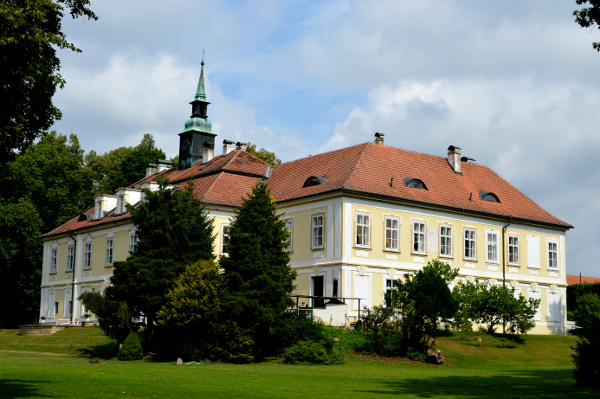
Houska
Houska Castle was built before 1316. Ownership of the castle passed through several families, the first being the Berkas of Dubé, and later the Hrzáns of Harasov, under whom possibly the castle became a manor house as it is now; subsequently, it returned to the Berkas of Dubé. Like Nový Berštejn, after the Battle of Bílá hora the castle was given to the Lords of Waldstein, first Adam and later Albrecht. During the second half of the 17th century the owners changed frequently, until in 1700 the castle was bought by the Kounic family. The Kounics never made it their residence. It is hardly surprising that Bohuslav Balbín saw it as a near ruin. 3
In 1924, the castle was bought by the senator and Director of the Skoda Works, Josef Šimonek. In the post war period, Houska served as one of the depositories of the National and University library (the State Library of the Czechoslovak Republic). In the late 1970s, it was decided that the castle should become a recreation facility for the workers of Spolana Neratovice.
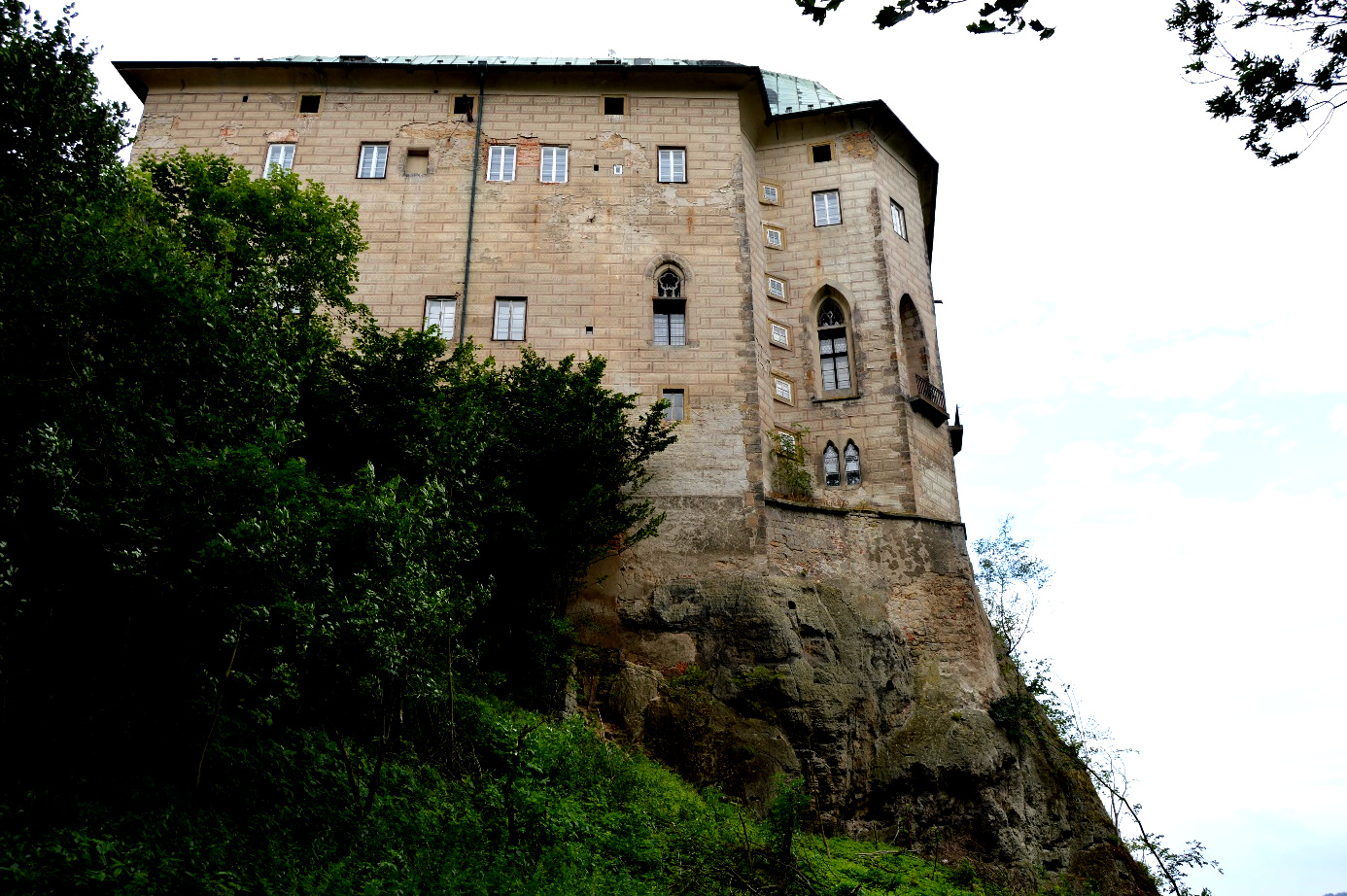
In the 1990s, Houska was returned to the Šimonek family in restitutions proceedings. The castle has remained in their possession to this day. The castle was opened to the public after extensive renovation in 1999. It is a popular tourist destination and offers a rich and full programme, especially in the summer holiday season.4
Nový Falkenburk
This castle was built in 1572 for the Berkas of Dubé, with whom its history was connected for a long time – until the early 18th century. After that, Falkenburk became the possession of the little-known family the Pachtas of Rájov, who rebuilt it in the Baroque style. During the Seven Years’ War, the castle was used as a hospital, and after that came a long period of dilapidation. In 1900, Falkenburk was bought by the Liberec industrialist Johann Moritz Freiherr von Liebig.
The castle was seized in 1943 to be used by the RSHA (Reich Main Security Office), and after the war it was confiscated from Johann Liebig.5
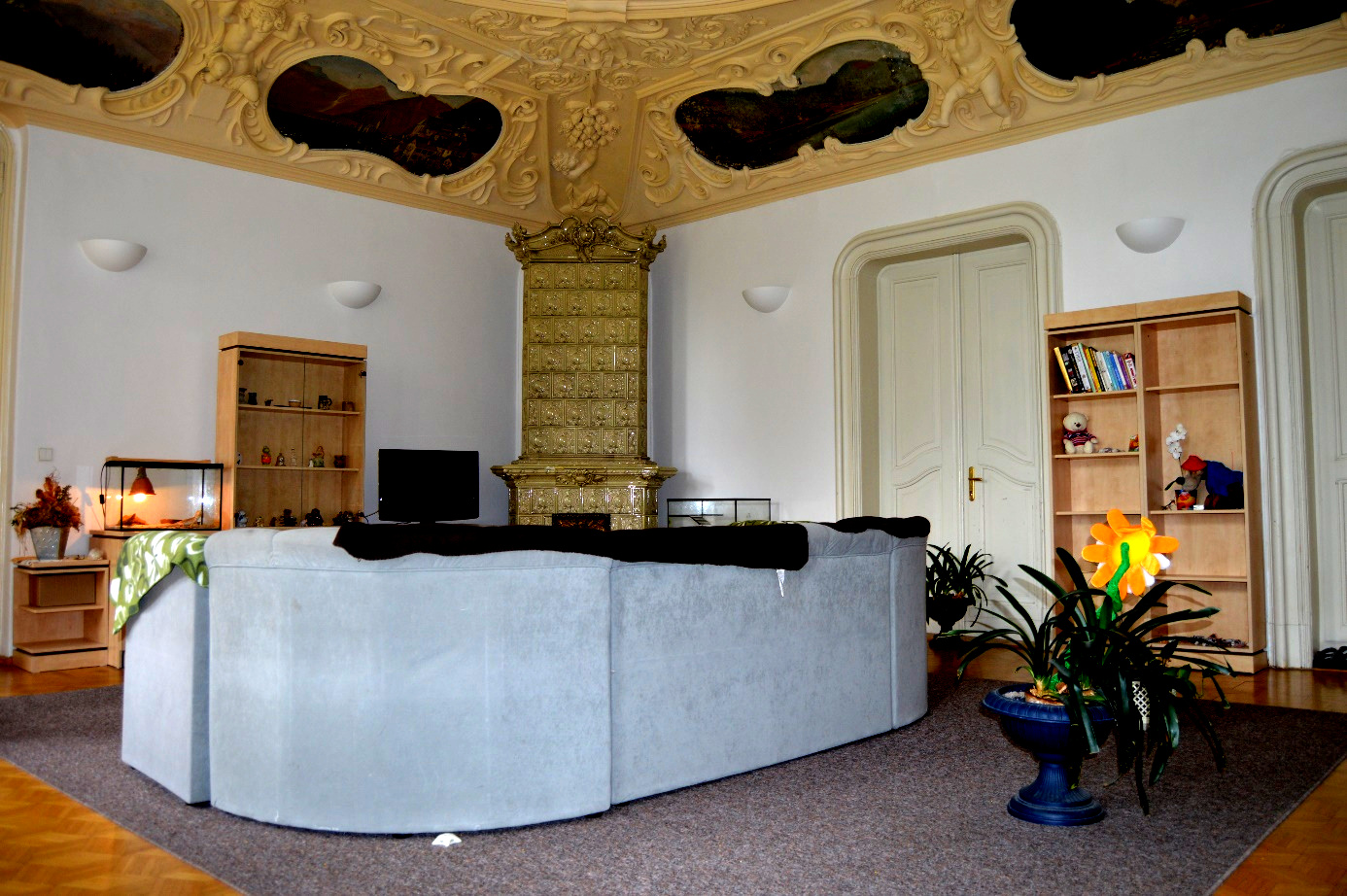
A situation very symptomatic for this period followed. At this time, a new use would be found for many historical objects. This castle became a training centre for the Czechoslovak Railways. Subsequently, the castle was used as (and remains to this day) a children's home. In 2001, the castle underwent extensive reconstruction.
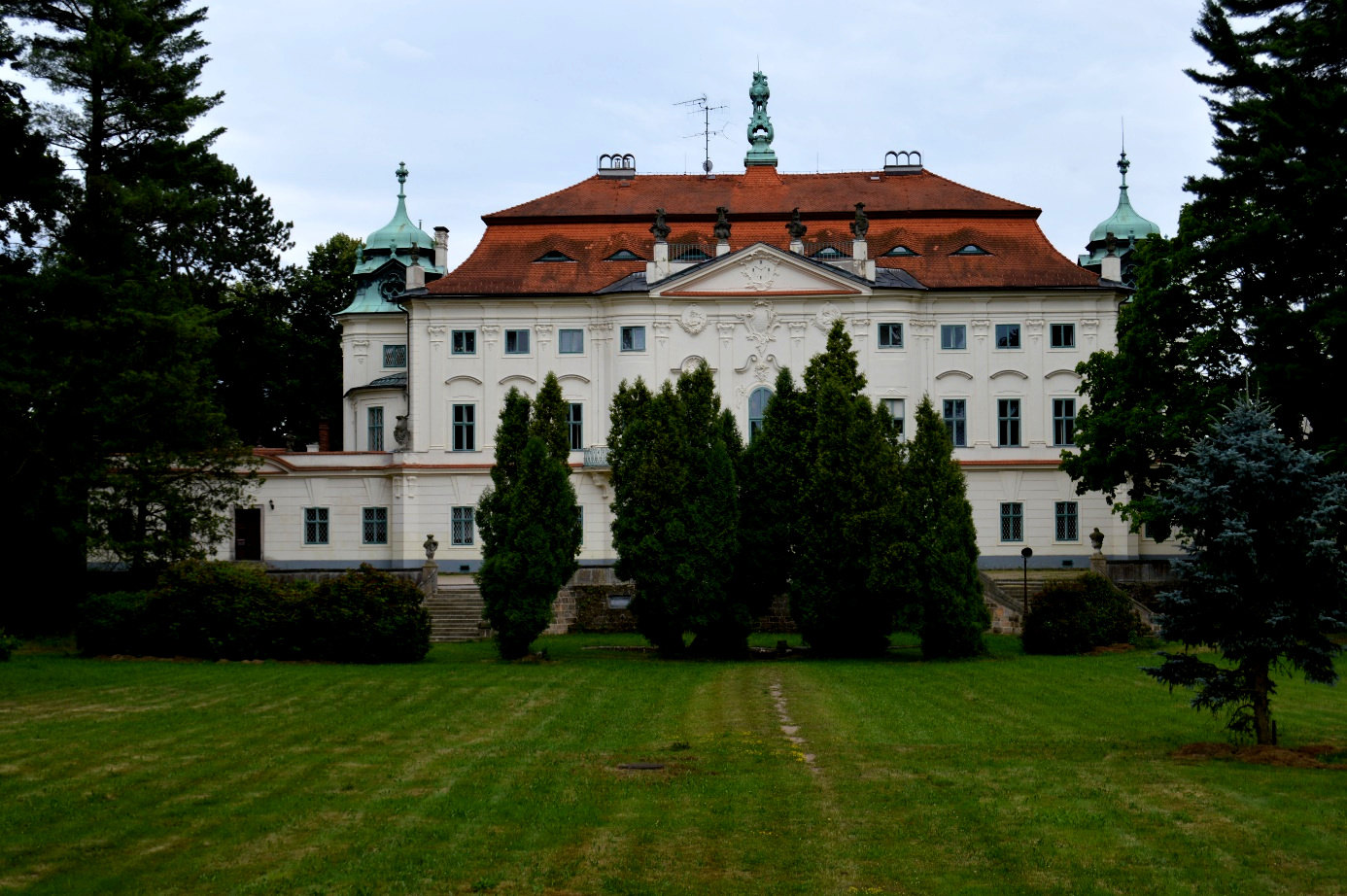
Mimoň
Mimoň castle was originally built in the Renaissance style for the Biberstein family. In the 17th century, the castle was rebuilt in the Baroque style; however, it was largely destroyed during a great town fire in 1806. The castle was practically built again in the Classicist style.6This period in its history is closely connected to the family of Hartigs, in whose possession it remained to the end of the war.
The post war period is one of the saddest chapters ever in the history of the care of cultural heritage. The castle was used by the Czechoslovak army, and in this period it fell into great disrepair. Nevertheless, it still maintained its heritage protection status and the Ministry of Culture did not wish to waive it. Yet in the end, the heritage protection status was removed and the castle was destined for demolition in 1985. The castle was supposed to be blasted in stages, but some of the explosives detonated spontaneously on being ignited by lighting. The rubble from the castle was used for the construction of a bus station. The only reminder of the castle still in existence is the castle park.7
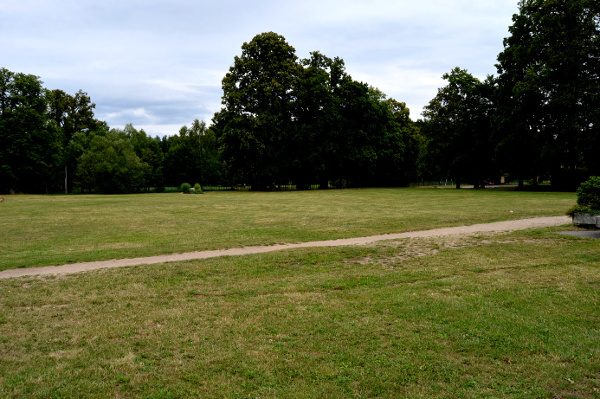
Where not stated otherwise, the photographs were taken by the author.
SEDLÁČEK, August. Hrady, zámky a tvrze Království českého. Díl desátý, Boleslavsko. 3. vydání. Praha: Argo, 1997, s. 174-176.↩
[cit. 18. 8. 2015].↩
SEDLÁČEK, A. Hrady, s. 250-252.↩
[cit. 18. 8. 2015].↩
SEDLÁČEK, A. Hrady, s. 288-291, ↩
KŘÍŽOVÁ, Květa a kol. Zámek v Mimoni: zbytečně zbořená památka. Mimoň: Město Mimoň, 2013. s. 186-187.↩
Tamtéž, s. 19-24.↩